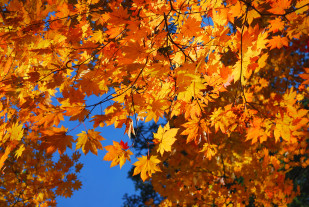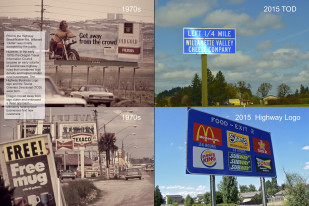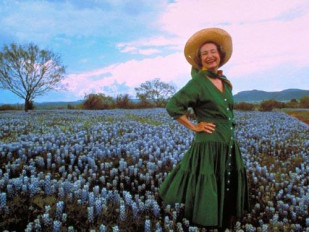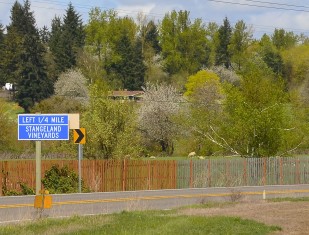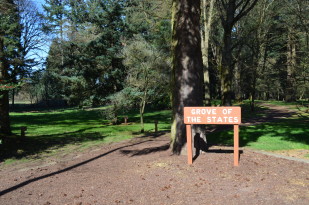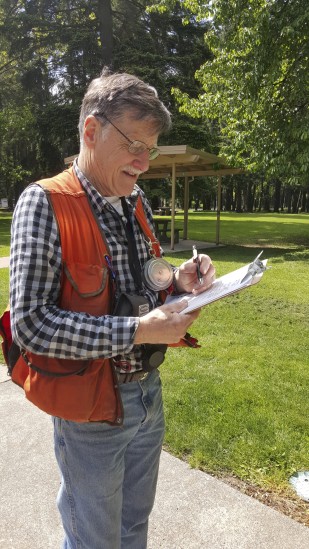A legacy of roadside beauty
Posted on: November 15th, 2015 in News & Press |
Many Oregonians may not realize that we owe a great deal of our driving pleasure to Lady Bird Johnson. The story behind the 1965 Highway Beautification Act (HBA) and its connection to our scenic roadways and the nation’s former First Lady bears retelling.
Untangling obstructed views
In her role as First Lady during the tenure of her husband President Lyndon B. Johnson, Lady Bird Johnson’s tireless support for the HBA was one of the primary reasons the act passed. Her relentless quest for beauty in public spaces was evidenced by Lady Bird’s work coordinating garden groups and civic leaders across America.
“Getting on the subject of beautification is like picking up a tangled skein of wool,” she wrote in her diary on January 27, 1965. “All the threads are interwoven — recreation and pollution and mental health, and the crime rate, and rapid transit, and highway beautification, and the war on poverty, and parks — national, state and local. It is hard to hitch the conversation into one straight line, because everything leads to something else.”
Lady Bird’s vision of preserving American roadside beauty found its origins in the numerous road trips that she and President Johnson took from their home in Texas to Washington D.C. Lady Bird was frustrated by the number of junkyards and billboard clutter along the way.
In his State of the Union address in 1965, President Lyndon B. Johnson addressed the nation, saying “A new and substantial effort must be made to landscape highways to provide places of relaxation and recreation wherever our roads run.”
The First Lady pushed hard for freeway right-of-ways filled with green landscaping and wildflowers instead of endless advertising. “Public feeling is going to bring about regulation,” she told reporters, “so you don’t have a solid diet of billboards on all the roads.”
Oregon’s colorful Interstate system a direct result of the HBA
President Johnson signed the Highway Beautification Act on October 22, 1965. The signing ceremony took place two weeks after the President returned to Washington D.C. from Bethesda Naval Hospital following surgery. He recalled the drive from the hospital to the White House along the George Washington Memorial Parkway with the following words:
“I saw nature at its purest. The dogwoods had turned red. The maple leaves were scarlet and gold… and not one foot of it was marred by a single unsightly man-made obstruction–no advertising signs, no junkyards. Well, doctors could prescribe no better medicine for me!”
The President added, “We have placed a wall of civilization between us and the beauty of our countryside. In our eagerness to expand and improve, we have relegated nature to a weekend role, banishing it from our daily lives. I think we are a poorer nation as a result. I do not choose to preside over the destiny of this country and to hide from view what God has gladly given.”
After saying, “Beauty belongs to all the people,” Johnson signed the bill and gave the first pen to Lady Bird, kissing her on the cheek.
How Oregon benefits from the HBA
When the Oregon Legislature formed the Oregon Travel Information Council in 1972, the OTIC was charged with overseeing a highway sign program designed to transform our roadways — the Interstate Logo Sign. Although the State of Virginia is credited as the first state to install the big blue and white logo boards, Oregon was not far behind. We later became one of the first two states to also adopt “Off-Interstate Logo” signs.
Oregon Travel Experience (the OTIC’s DBA name) participated in the HBA’s 50th Anniversary on October 22, 2015 at the State Capitol Building. Members and program leaders from OTE, the Oregon Department of Transportation, the Oregon Garden Club Federation, Keeping Oregon Green, and Green Thumb tended booths and displays. Event visitors had an opportunity to learn more about the history of the HBA, and to connect the many threads of Lady Bird’s “skein of wool.”
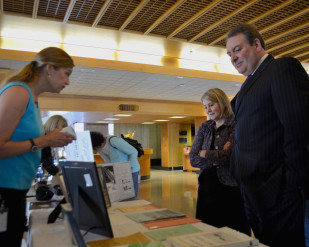
ODOT Director Matt Garrett and OTE Director Nancy DeSouza attended HBA Anniversary exhibits at the Capitol. ODOT’s Shelley Snow shares a sign display.
ODOT Director Matt Garret and OTE Executive Director Nancy DeSouza were on hand to highlight the important work performed over the last 50 years by volunteers from local Garden Club Federation chapters. The Oregon Garden Club Federation’s decades-long work planting thousands of daffodil bulbs beside Oregon highways is another significant reason that our state right-of-ways and freeway meridians bloom golden in springtime.
From the HBA to the Grove of the States
Oregon’s Grove of the States is located at the southbound I-5 French Prairie Rest Area and is thought to be the oldest arboretum of state trees in the US. The grove was planted in 1967 under the guidance of Oregon Attorney General Robert Thornton. A public dedication was held at the rest area as part of a National Conference of Attorney General’s Conference event. Trees representing 53 states and US Territories were planted by members of the Oregon Association of Nurserymen and the Oregon Highway Department.
The grove’s original trees were placed in a symbolic geographical location, but planning for their future health and growth was not fully considered. Nearly a half-century later, the grove has suffered significant specimen loss from highly crowded conditions that worsened each year with the relentless growth of surrounding native Douglas-fir trees.
How we can save a national treasure
OTE and its partners are building an alliance of stakeholders, including conservation groups, heritage organizations, foresters, arborists, and community leaders to continue preservation and restoration of this treasure.
If you represent an organization or constituency, please consider participating in an official capacity with OTE and our other project partners (Friends of Trees and the Oregon Department of Transportation) as we move forward with restoration efforts.
Feel free to contact us with your ideas, comments or concerns. Telephone the Grove of the State’s Restoration Project Manager Annie von Domitz at 503-373-0864 or contact her via email.
*Story sources: Federal Highway Administration, Wikipedia, GOS Project team, ODOT and OTE Communications
 Payments
Payments